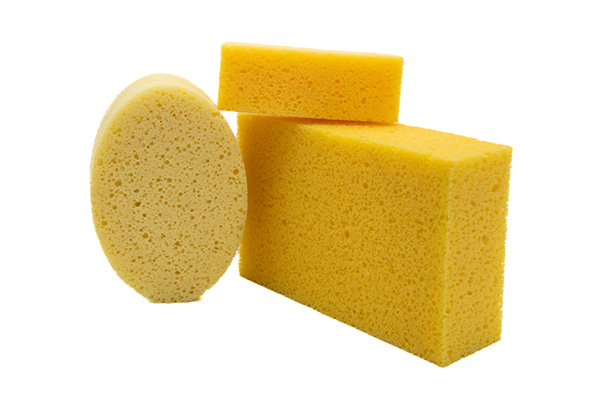
These hydrophilic foams are relatively dense sponges with a high tensile strength and elongation at break.
These characteristics make them ideal for cleaning, smoothing and fettling ceramics during the casting process, as they are tear-resistant. This means that the sponge does not disintegrate during use, which is very important.
Cheaper and lower density sponges can disintegrate during casting, which causes small pieces of sponge to stick to the ware before it is glazed. If this happens, then the sponge burns off during the firing process and causes pin-holes in the surface of the ware, which renders the finished product to be un-saleable.
Therefore it is better to spend more money on high quality sponges, rather than to purchase low quality sponges and risk losing money on potential product losses.
The most popular types of these sponges that we offer are the following qualities, photographs of which are shown in our gallery:
A small-pored sponge type used in the tableware industry
Medium pored sponge which is probably the best sponge for general use on all types of ceramics
This sponge quality has medium/large pores, which offer an abrasive quality that is popular in the sanitaryware industry
This sponge quality also has medium/large pores and similar characteristics to the HR sponge above
The standard characteristics and specifications of the Hydro sponges are shown in the below table:
| Foam Type | HM | HF | HR | HN | |
| Density (kg/cbm) | Min | 32 | 27 | 28 | 28 |
| Max | 38 | 31 | 32 | 32 | |
| Compression Load Deflection (kPa) | Min | 4.0 | 2.5 | 2.5 | 2.5 |
| Max | 6.0 | 4.5 | 4.5 | 4.5 | |
| Tensile Strength (kPa) | Min | 140 | 120 | 120 | 120 |
| Max | 140 | 150 | 150 | 150 | |
| Elongation at Break (%) | Min | 140 | 210 | 150 | 150 |
| Max | 140 | 230 | 200 | 180 |
IMPORTANT: Please note that these specifications are correct as of November 2013, but can be altered at the manufacturer’s discretion subject to revised test results.